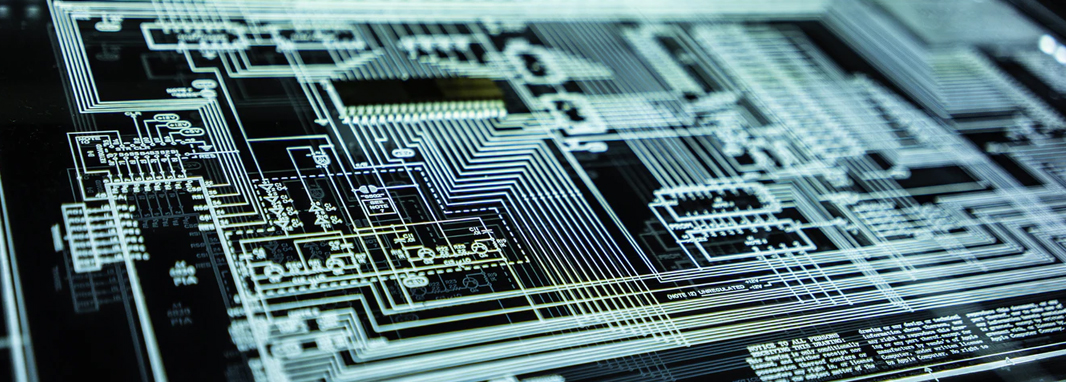What’s the first thing you think of when you hear “hacker”? A solo user hunched over a computer and doing some loud typing to hack the network? Nothing of the sort!
The present-day world of cyberspace criminals is exceptionally well-organized, meticulous, and marketable. Cyber criminals have different motives and targets they generally don’t deviate from. According to the FBI, cyber intrusions are becoming more commonplace, more dangerous, and more sophisticated. The 2020 Global Risks Report forecasts a rise in cyber-attacks targeting operations and infrastructure and data/money theft.
Digital immunity
Many organizations have already increased investment in cybersecurity, namely, in prevention, detection, and response capabilities. Yet too often businesses find themselves in restoration mode after an intervention. Enterprises pay high a price for cybersecurity holes: 20% of them report losses of more than $50 million. As being so, cyber resilience should become a priority for every business.
We Provide AI-Powered Solutions from Concept to Launch.
Most of the largest businesses already use machine learning and artificial intelligence to automate their processes and improve overall performance. Cybersecurity and cybercrime are no exception.
In this piece, we will explore how AI helps to be immune to the cyber world attacks and keep your data safe.
It is no secret that artificial intelligence in cybersecurity works without being explicitly programmed. Today’s AI algorithms use statistical techniques to give computers the ability to “learn”. Learning here means using data and recognizing patterns in this data to improve performance on a specific task step by step. In a broad sense, a machine learning system is a bunch of algorithms that take in torrents of data at one end and, at the other end, spit out conclusions, correlations, recommendations, and perhaps even decisions.
Traditional security system vulnerabilities

There are two major shortfalls of traditional security systems. The first drawback is being rules-based. Such systems will not withstand constantly evolving malware that modern cybercriminals deploy. These attacks are not standard and easily managed issues anymore. Nowadays, cybercriminals create new tools, continuously improve the complexity of their attacks by leverage cutting-edge technologies and sophisticated algorithms.
Moreover, given the highly varied nature of new cyber threats and the sheer amount of information needed to document an attack adequately, it’s no longer possible for cybersecurity teams to process everything within a sensible timeframe. Especially it concerns large organizations.
Traditional detection and response times for cyber threats are not enough even for basic things. It can take a longer time to spot interventions into complicated systems, and throughout this period, attackers will exploit vulnerabilities to compromise systems and obtain data. Obviously, big fast-changing businesses need to keep pace with next-generation cyber defense.
Human security analysts generally can’t handle these tasks alone and need some degree of automation in their cyber threat response operations. If your cybersecurity relies only on the capabilities of human-based monitoring, it is in danger. Businesses need to be able to recognize, and respond to the threats instantly, 24/7/365.
In the present day, advanced AI systems with their machine learning algorithms and real-time counter-measures are first of the steps in the evolving security landscape. Currently, statistics from senior executives from industries, including consumer products, retail, banking, insurance, automotive, utilities, and telecom, shows that more and more enterprises detect breach attempts today via the use of artificial intelligence in cyber security.
Businesses add AI to their cyber defense

AI differs from traditional computing. With its systems being not programmed - artificial intelligence in cybersecurity constantly learns to be able to stop the unknown. Machine learning examines all types of malware and solves "fuzzy" problems. Let's check how AI takes cyber protection on the next level.
Artificial intelligence security systems analyze data from millions of cyber incidents and apply them to the identification of potential threats. AI takes into account the relationships between threats (malicious files, suspicious IP addresses, or insiders). Thus, artificial intelligence cybersecurity is able to self-improve on the basis of its own concepts of what is right and what is wrong.
In the twinkling of an eye, AI cybersecurity consumes billions of data artifacts from both structured and unstructured sources, such as blogs and news, and improves its knowledge to "grasp" new cybersecurity threats and risks.
AI is easily scaled for safety hygiene of businesses, the old approach to business security can't keep up with the speed and scale of modern risks anymore. To keep current on this swiftly changing area, enterprise officials invest their time and money to detect cyber threats using AI rather than predicting and responding. This very moment, organizations mature in their artificial intelligence cybersecurity usage. Learn more about how to use AI in business.
How AI boosts security

AI for cybersecurity systems examine the code against the database of similar events that have previously been deemed as malicious. Thus, when a new sort of malware emerges, either a tweaked version of existing malware or a new one, the AI cybersecurity can block such attacks.
This is the way things happen even when the malicious code is combined with large amounts of harmless or useless code. Such a peculiarity of advanced artificial intelligence helps companies to understand at once what kind of attack emerged and mitigate it based on the models provided by machine learning.
Another example of AI and cybersecurity interaction is producing actionable insights for the companies. The system can connect the dots between threats and respond to threats with greater confidence and speed. This ability is known as cognitive computing, an advanced type of artificial intelligence. Cognitive security leverages diverse forms of AI, including machine-learning algorithms and deep-learning networks, that eventually get stronger and smarter. This eventually will improve processes like breach and attack simulation to continuously test and validate their security controls against evolving threats.
An AI-based network-monitoring tool can track what users do daily, developing a picture of their typical behavior. By analyzing this information, cybersecurity AI can detect anomalies and respond accordingly.
Data comes in the variety of its forms, and the input amount is continuously growing. It's too hard for a human to be able to manage it. Besides, automated tools are more likely to show correctly what a human needs to watch.
This is a primary benefit of artificial intelligence in cybersecurity: machine learning identifies and reacts to assumed issues almost immediately, stopping potential threats from disrupting businesses. AI in cybersecurity ensures that the network is safe without relying on humans who have to perform an impossible task of monitoring everything at once.
Unlike humans, artificial intelligence guarantees the simultaneous presence in all systems. It can be integrated into utterly all processes and interactions and, likewise, respond to the attacks at any time.
In a nutshell, the growing complexity of networks is beyond what human beings are capable of handling on their own, so the best choice is to employ AI for cybersecurity.
Get expert help to stay safe

But while AI and ML do bring profits for cybersecurity, companies need to realize that these tools aren't a replacement for human security staff. Like any other software on the network, you cannot just install and forget about it. Adequate performance requires regular evaluations and updates.
Moreover, AI cybersecurity tools can be coded inappropriately, for example, resulting in things being missed by the algorithms. If the device skips a particular kind of cyberattack because it hasn't been programmed to take specific parameters into account, that's going to lead to problems. So play it safe, do not rely upon artificial intelligence in cybersecurity as its sole guardian.
As the latest tech presses on, many companies are eager to revolutionize their with the cutting-edge products without considering the significant security measures that need to be taken to secure them. It's too risky! To stay on top, business needs proactive cybersecurity strategy provided by experienced cybersecurity AI experts with niche skills. Professionals from Zfort Group, artificial intelligence development company, can hit the ground running and assist you with AI-based software automation, test systems and networks for vulnerabilities and fixing them preemptively, as well as updating existing systems in the organization and elaborating on recovery strategies.
Organizations need to remember that artificial intelligence in cybersecurity great achievements can be used not only by the “good guys”. Emerging technologies and new tools (some of them are open-source) make cyberattacks more dangerous and harder to spot than ever before.
With the increased quality of engineering, cyber criminals are more likely to use it in their repertoire. Some of them already started to conduct hacking operations and malware attacks.
There are several examples when AI attackers claim to be the boss and request an urgent transfer of funds. They can use AI to impersonate the voice of the CEO and ask to send $50 000 to a certain account. The nature of a CEO's job presupposes that their voice is often in the public domain, so criminals can find and employ voice recordings.
AI can be used to conceal cyber outbreaks so effectively that one might never know that their network or machine was affected. Artificial intelligence can mimic not only somebody's voice but significant system components. Cybercriminals use AI-enabled malware programs to automatically learn the computation environment of an organization, patch update lifecycle, communication protocols, and time when the systems are least defended.
Consequently, cyber actors can perform undetectable attacks as they mingle with an organization's protection environment. For example, TaskRabbit was hacked, compromising 3,75 million users, yet investigations could not pursue the assault. Hackers can penetrate and leave a system at their discretion. We need to keep in mind that AI facilitates such attacks, and the technology will only lead to the creation of faster and more intelligent attacks.
To endure in this battle, 61% of enterprises state they cannot do without AI in cybersecurity technologies when it comes to catching breach attempts. About half of the enterprises say that their budget for artificial intelligence in cybersecurity will increase by an average of 29% in 2020.
We Provide AI-Powered Solutions from Concept to Launch.





